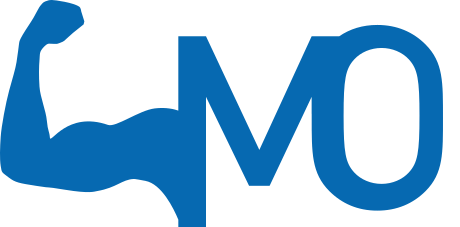‘‘Use it or lose it’. This concept is vital for optimal function of the shoulder. Your muscles or joints will function differently if you do not use them properly. If you have a sedentary lifestyle, characterized by bad forward slumped posture, you may not be using essential muscles and could instead be overusing other muscles. This is typical in the start of a shoulder problem. On the contrary, overuse of certain shoulder muscles during sporting activities can also be cause shoulder problems. Shoulder strengthening exercises may be an effective way to improve a shoulder problem, but always consult a therapist to ensure that you are considering the right shoulder exercises for your specific issue.
Always consult a therapist first, to determine if this low back exercise is good for you. If you don't have a therapist yet, please find one near you by using our therapist map.
Understand your neutral posture. Most of the shoulder exercises start in a neutral posture. Please read about the importance of posture before starting with any exercise. Click here for more information about posture.
List of conditions which could have benefit from this shoulder exercise
A diagnosis or shoulder exercise prescription for the following conditions could only be done by a medical doctor or your therapist. This list has merely been given to discuss with your therapist.
- Mechanical shoulder pain, neck pain, middle back pain, upper back pain.
- Shoulder bursitis, shoulder tendinitis, shoulder rotator cuff injury, frozen shoulder, shoulder impingement syndrome. supraspinatus tendinitis, infraspinatus tendinitis, biceps tendinitis
General tips for shoulder strengthening exercises
- Frequency: These exercises are effective for strengthening the muscles of the shoulder joint. The frequency depends on your goal. If your goal is to build endurance, rather than strength, then the frequency should be higher. Doing more exercises than recommended is not always necessary or effective. Please discuss this with your therapist.
- Combine: Instead of focusing on just one exercise, combine similar exercises for a more powerful effect. Three mobility exercises is the average recommended combination.
- Warming Up: Start with a few of the shoulder mobility exercises before this beginning this strengthening exercise as a warm up.
- Shoulder Pain: Pain is a warning signal… Never ignore pain. Shoulder exercises should be done with care as they may worsen your issue. Do not continue with this exercise if you experience shoulder pain. Ask your therapist for more information.
- Speed: Do not hurry. This shoulder exercise should be done slowly.
- Stay alert: Think about each movement involved in the shoulder exercise rather than just getting the exercise done.
- Overuse: Shoulder pain is most commonly the result of overuse and repeated or prolonged movements of the shoulder muscles, tendons, ligaments or joints. This overuse can result in a strain (muscle injury), a sprain (ligament injury), or inflammation of the neck joints.
- Posture: Focus on good posture to prevent or minimize should problems. Even a small postural change can make a huge difference. The most important thing to remember is that the best sitting posture is a variable posture. Change your posture every ten to fifteen minutes!
- Risk factors: The risk of shoulder injury increases with age and shoulder injuries are more common with certain sports and occupations. Athletes who use repetitive arm motions, such as baseball players and tennis players, have a greater risk of shoulder injury. Occupations such as carpentry or painting that require repetitive arm motions, often overhead; result in increased pressure on the shoulder joint over time and increased risk of injury.


